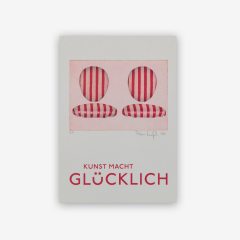Hans Hartung
Born in Leipzig, Hans Hartung began to study philosophy and art history at the university in 1924. An encounter with Wassily Kandinsky’s works, however, drove him to study painting just one year later in Leipzig, Dresden and Munich. In 1935 he emigrated to France and settled in Paris, where he met important artists such as Alexander Calder, Joan Miró and Piet Mondrian.
"A simple line - violent, effervescent, ruffled, bursting or calmly regular, even - translates what we feel. It corresponds with our life." (Hans Hartung, in: Von der Heydt-Museum (ed.), „Alternativen. Malerei um 1945-1950, Wuppertal 1973, p. 27.)
The line is crucial for Hartung from the beginning in all variations - whether as a beam, a clew or a grid. Despite all the supposed spontaneity of his gestural line, Hartung steers and controls his composition by making numerous preliminary drawings beforehand. Only the most top-quality preliminary drawing is then translated onto the canvas. It was not until the 1960s that Hartung increasingly detached himself from precise sketches and finally arrived at "unprepared improvisation". With the help of spray guns and rubber whips, Hartung now throws the paint onto larger canvases. With this gestural pictorial language of line bundles and spots of color, Hartung became one of the most important representatives of Informel and anticipated the Abstract Expressionists' essential design characteristics.
- Prices include German VAT. Exclusive of shipping costs for delivery to the European Union. All prices are subject to change and availability. Change region and currency










